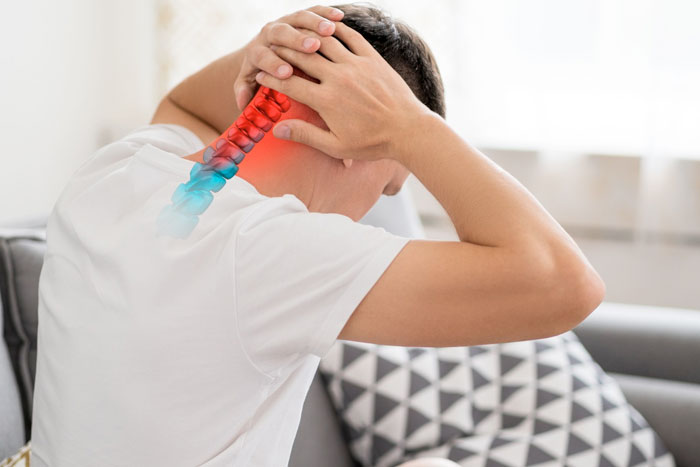When Wear-and-Tear Affects the Spine
Spondylosis refers to age-related changes in the spine. Over time, the discs, joints, and bones in the neck or lower back may wear down, leading to stiffness, pain, or nerve-related symptoms.
Why Spondylosis Happens as We Age
Just like other joints in the body, the spine undergoes wear-and-tear with time. Discs lose hydration and shrink, joints develop arthritis, and bone spurs may form. These changes are a natural part of ageing, but in some people they cause pain or nerve compression.
Common Causes and Risk Factors
Several factors can increase the likelihood of developing spondylosis:
- Ageing: the most common reason discs and joints deteriorate
- Genetics: family history of degenerative spine problems
- Lifestyle factors: smoking, obesity, or physically demanding jobs
- Previous injuries: trauma or strain accelerating degeneration
Symptoms That May Signal Spondylosis
Spondylosis can appear in the neck (cervical spondylosis) or lower back (lumbar spondylosis). Symptoms may include:
- Localised neck or lower back pain
- Stiffness, especially after waking or sitting too long
- Headaches (when the neck is affected)
- Numbness, tingling, or weakness in the arms or legs if nerves are compressed
- Reduced flexibility or range of motion
How Doctors Diagnose Spondylosis
Because symptoms overlap with other spine issues, diagnosis usually involves:
- Physical examination: checking posture, flexibility, and reflexes
- X-rays: to look for bone spurs and joint changes
- MRI or CT scans: to assess discs, nerves, and spinal cord compression
Treatment Options for Spondylosis
Treatment focuses on relieving symptoms and improving mobility:
- Lifestyle adjustments: posture correction, regular low-impact exercise
- Medications: for pain and inflammation
- Physiotherapy: stretching and strengthening exercises for the spine
- Injections: for targeted pain relief
- Surgery: in cases of severe nerve compression or instability, procedures such as decompression or fusion may be recommended
Living with Degenerative Spine Disease
Spondylosis is common, especially with ageing, and not everyone develops symptoms. Staying active, practising good posture, and maintaining a healthy weight can help slow progression. When symptoms do appear, early medical care can prevent worsening and maintain quality of life.
Book a Consultation for Neck or Back Stiffness
If you’re experiencing persistent stiffness, pain, or nerve symptoms, schedule an appointment at Mash Spine & Orthopaedics for a clear diagnosis and treatment plan.





